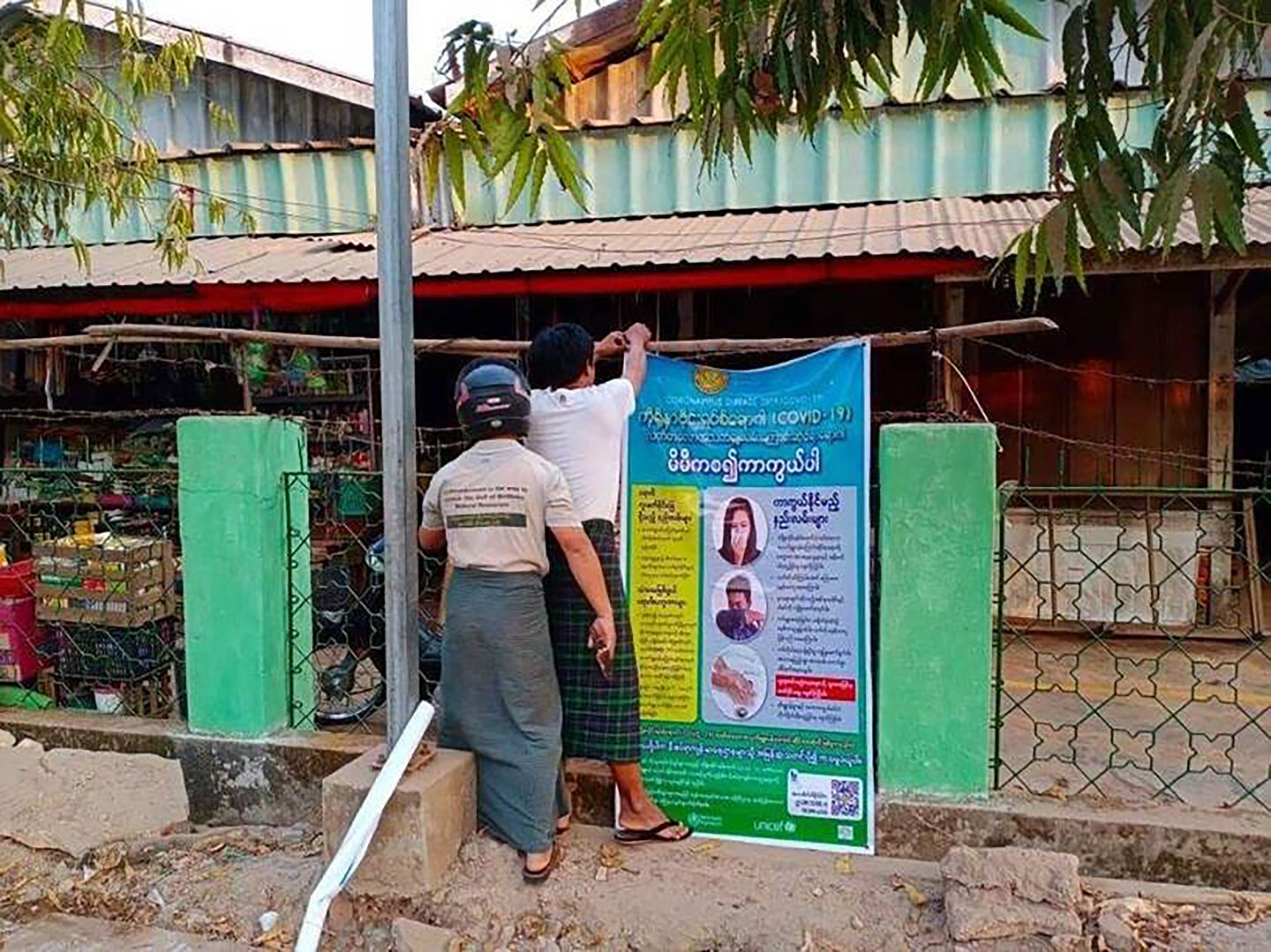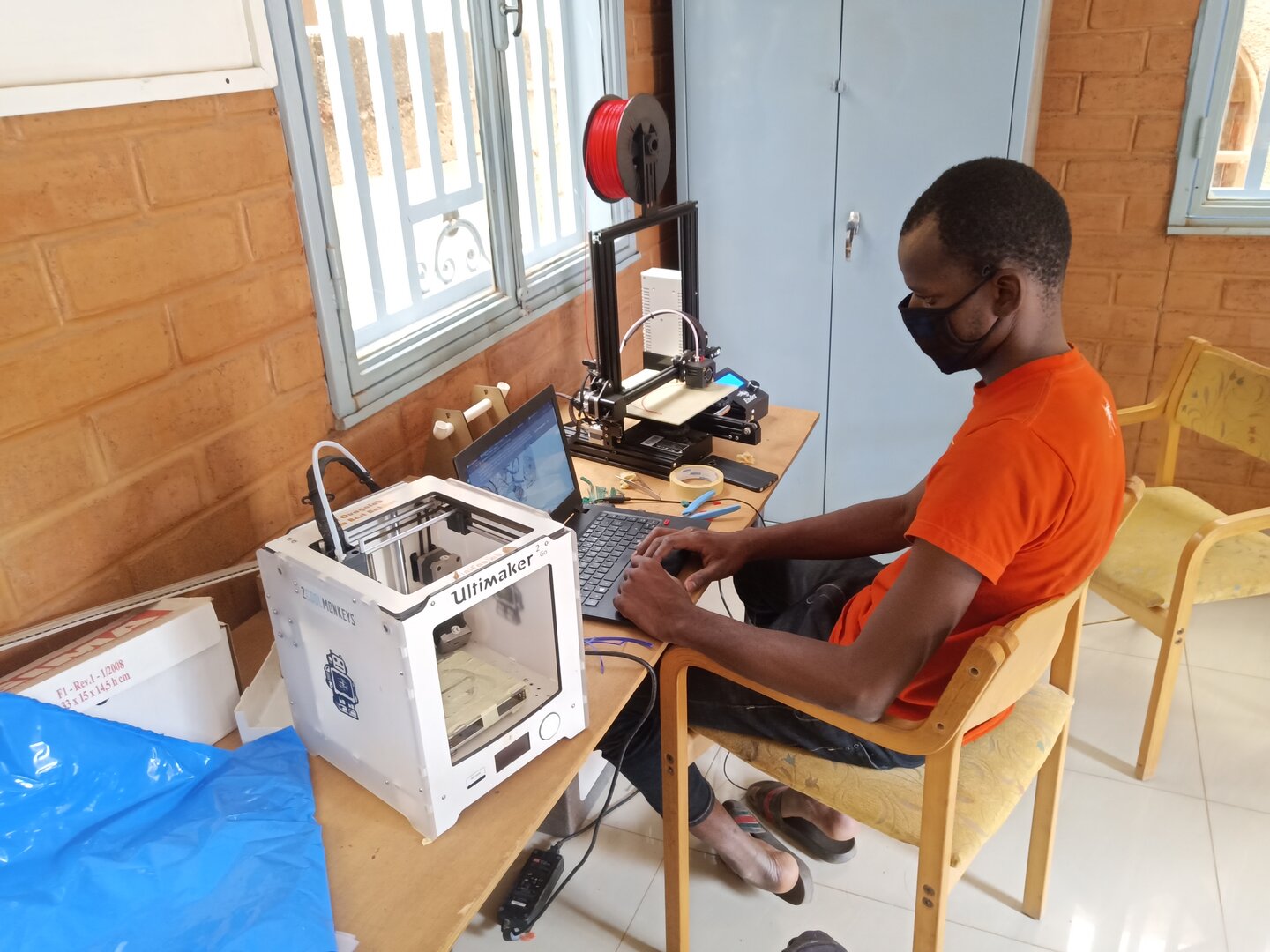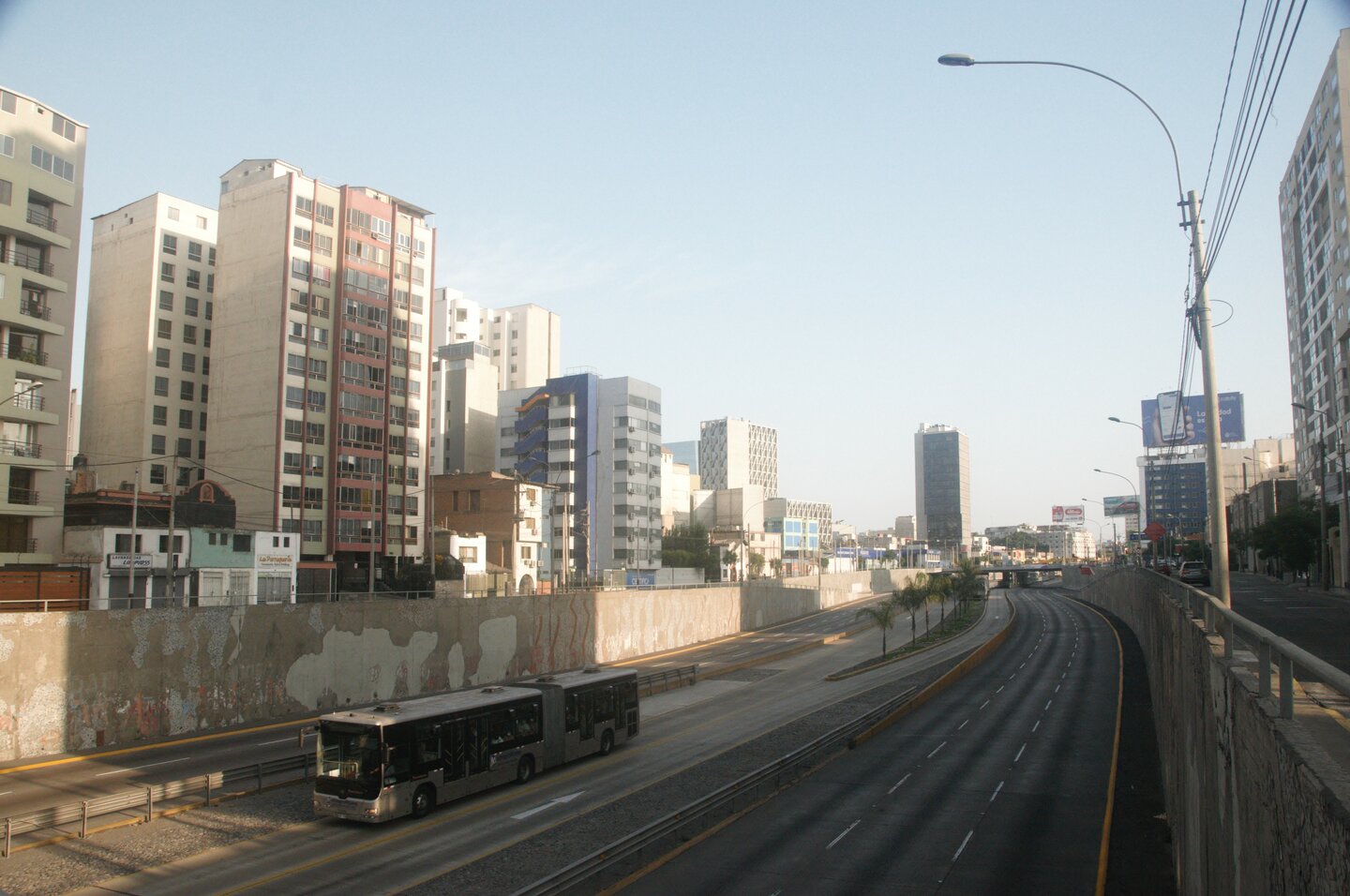While we in Switzerland hope that the contagion curve will gradually flatten out, the situation in many developing countries is becoming more acute. Three Helvetas staff members from three continents regularly report on how COVID-19 is changing the daily lives of people in Myanmar, Burkina Faso and Peru. Part three of our extraordinary diary. Read Part 2 from March 19.
Myanmar: In a pressure cooker
By Peter Schmidt, Director Helvetas Myanmar

Our pressure cooker at home in Switzerland had a shiny red metallic lid with a valve that could be screwed apart. The hissing and whistling on the stove when the red markings on the valve became visible always gave me the creeps when I was a child. Myanmar has now (29.3.) its first confirmed eight cases of corona virus infection. All but one of the cases have been imported from Europe or the USA, reports the Ministry of Health - and also publishes the name, age, sex and place of origin of the infected persons. Evil comes from outside and plays into the hands of those who incite xenophobia. Not only here.
Education posters produced and hung in a hurry
Currently tens of thousands of migrants are returning to Myanmar, mainly from Thailand. In Mon, one of the provinces in south-eastern Myanmar on the long border with Thailand, where Helvetas is active in sixty villages on the coast, one in three households has a family member who has migrated. Many of the factories where they have worked are closed. They are returning home to their families, partly because the water festival, the most important religious event of the year, is just around the corner. The government has declared itself unable to enforce the two-week quarantine that was actually ordered. The villages are organizing themselves, temporarily quartering the returnees in monasteries or other makeshift accommodation. We support, have printed, distributed and hung up information posters about COVID-19 in a hurry. With funds from the Swiss Agency for Development and Cooperation (SDC) we make temporary accommodation possible. We rewrite project plans, adapt interventions, negotiate with donors about transfers in the project budgets. Hectic days.
The pressure is increasing. The risk of infection is going up. In coastal villages, water is a rare commodity in the dry season (now!). Soap is expensive. Face masks and protective clothing are in short supply. The usual income that the migrants send home is missing. An additional person burdens the family budget. In Switzerland the valves have reached the second, the highest red ring. It bubbles and steams. But the health system is functioning, the population understands the seriousness of the situation, and the state rescue package of 42 billion francs for the economy has been put in place. And here? Yes, preparations are being made. And what remains is the adaptability of the people and solidarity. Will that be enough to keep the lid on the pot?
Burkina Faso: Which is more devastating: the virus or hunger?
By Franca Roiatti, Helvetas communications coordinator for West Africa

Nights are strangely quiet in Ouagadougou. The curfew was imposed mainly to avoid gatherings in the so-called "maquis" bars and restaurants, which can be found on every corner of the city. During the day there is still a lot going on, but the mood is changing. The rising number of COVID-19 cases has prompted the government to declare the state of health emergency and quarantine all cities that have recorded at least one case. Nobody can enter or exit Ouagadougou, Bobo-Dioulasso and the other cities "by car, motorbike, horse or cart", as the government spokesman clarified, not without stirring up some jokes.
Within the “urban borders”, people can still move freely. Many now wear masks, even when driving a car, alone. The biggest open markets are closed, taxis and other public transport are banned. Part of the population fears that these measures will not be enough to contain the epidemic and calls for total confinement as in Europe. However, many more are afraid that even the consequences of the partial lockdown will be unbearable for a lot of people. "Yes, there is the risk of the virus, but hunger threatens to kill us too," is the grim statement of the taxi drivers' representative.
Young creatives develop face protection
The majority find, as usual, a way to adapt. While the central market, normally overcrowded, looks ghostly deserted, in other, officially closed markets, business have spilled over neighboring streets: Women selling vegetables, everyone selling hand washing devices, some boys selling sanitizing gel at an absurdly high price: "You know that the government has imposed a price ceiling”? I dare to object. "Yes, but then there is quality," they answer with a smirk.
A group of young creative people from the WakatLab, the fablab of Ouagadougou and Bobo, armed with some 3D printers, respond to the emergency: "We are producing face shields for healthcare workers and testing models of respirators at a fast pace," explains Gildas Guiella, the president of the association that runs the lab. They have already developed a digital tool to help health authorities monitor the condition of COVID-positive patients confined at home.
Of course we are also adapting our Helvetas activities. How? We go mobile whenever we can. Instead of handing out cash to internally displaced persons and their host families, we will provide mobile phones with virtual cash. The same mobile phone can be used to deliver targeted messages about now important hygiene and prevention measures and COVID-19 in general.
Peru: Emptiness - and looming economic hardship
By Kaspar Schmidt, Helvetas Program Advisor Peru

Case numbers are also rising in Peru, but less rapidly than elsewhere. It is quite possible that the decisive action of the Peruvian government will actually slow down the spread of the virus in the country. The government has extended the state of emergency, which initially lasted two weeks, by two more weeks until Easter Sunday and extended the night-time curfews.
The focus is on the daily updates of the case numbers; increasingly, however, the economic questions in connection with the corona crisis are also being addressed: What will be the consequences of the imposed compulsory rest for the Peruvian economy? How can the economic damage be limited?
It is still unusually quiet in Lima. Friends who know the capital with its notoriously congested streets were amazed by my photos. Empty, only a few bicycles can be seen, here and there a bus or some cars. To go shopping or to make a deposit at a bank, I queue up, about three quarters of an hour in a queue of up to 200 meters with a distance of two meters between people. Practically everyone waiting wears masks. The people in our residential quarter are very disciplined. However, there are probably very few people here who have to worry about their existence, unlike in many other quarters of the city.
Payments via mobile phone
In a virtual team meeting that we recently held via Skype, a colleague pointed out the serious consequences of the emergency regime for the millions of people working in the informal sector, for example as domestic workers or small traders. But also for all the migrants and refugees living in Peru. Many of them are not being reached by the government aid measures. Last week, one of the Helvetas projects would have wanted to pay out support contributions to 300 needy refugee families from Venezuela. It was not possible: restricted freedom of movement and assembly bans made it impossible to hand out cards with credit to the families. The project team has now very quickly found an alternative system via mobile phone and bank branches and is currently preparing the payment of these urgently needed contributions to the first families.
A thin crescent moon shines brightly in the night sky in Lima, next to it glittering stars - for decades the air has not been as good here as it is now. On a beach near the city, where thousands of people usually cool off in the sea in the afternoon, large flocks of seabirds have once again gathered. The metropolis of Lima forced to rest - how long will it last?
Read Part 2 of the Diary from March 19.

